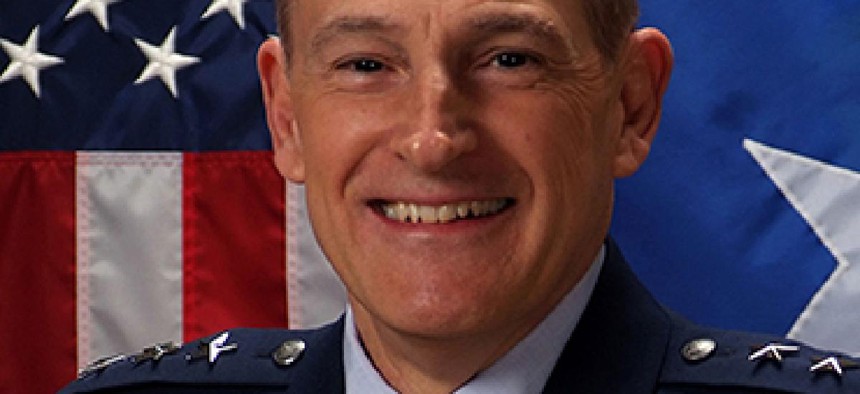Air Force CIO: Restructuring key to information dominance

Lt. Gen. Michael Basla says IT budget reporting is a "deficiency" that he hopes to begin to address before his retirement in November.

Lt. Gen. Michael Basla says the Air Force CIO office is moving to a flatter organizational structure.
Air Force CIO Lt. Gen. Michael Basla says a recent restructuring of his office will help it better defend cyberspace and implement IT projects across the service. The SAF/CIO A6 "realignment," as he dubs it, is meant to synchronize the office’s cyberspace strategy, policy and programming.
"The bottom line here is Air Force investments [in] cyberspace capabilities must align with strategic decision-making and we must improve this alignment so that we can free up resources for modernization and further innovation," Basla said Sept. 4 at a conference hosted by AFCEA NOVA in Vienna, Va.
Basla, who is also the Air Force's chief of information dominance, portrayed a CIO office in transition, one that is catching up to the instantaneousness of cyberspace. "We no longer operate in silos," he reported. "We have created interdependent linkages that open up 66 lines of communication amongst my staff. We're getting 'flat' like you in industry have already been."
Paraphrasing advice he said he had heard from industry, he added, "this domain operates fast and we can't wait for the normal bureaucracies that are traditionally in the Pentagon."
Basla, who will retire from the Air Force in November, told FCW after his speech that his office’s realignment will outlive his tenure as CIO. Better communication and coordination of Air Force IT needs among CIO staff is here to stay, he asserted. "To be honest with you, my staff was improperly organized to do that in the past," he said in his speech, while touting the realignment.
Basla's last couple months in office could bring more organizational and policy changes. He said he asked for and received the go-ahead from Air Force senior leadership for more "central authorities" in the CIO office. With that authority, he might hope to improve the accuracy of IT budget reporting, which he said is a "deficiency" in the service.
To try to correct that deficiency, the CIO's IT compliance division is reviewing investments to see if they are properly registered in the Enterprise IT Data Repository, Basla said. The repository helps with IT portfolio management by offering a place to view, load, and query data from various systems. "We're going to use that [repository] for greater transparency and accountability in our investments," he said.





